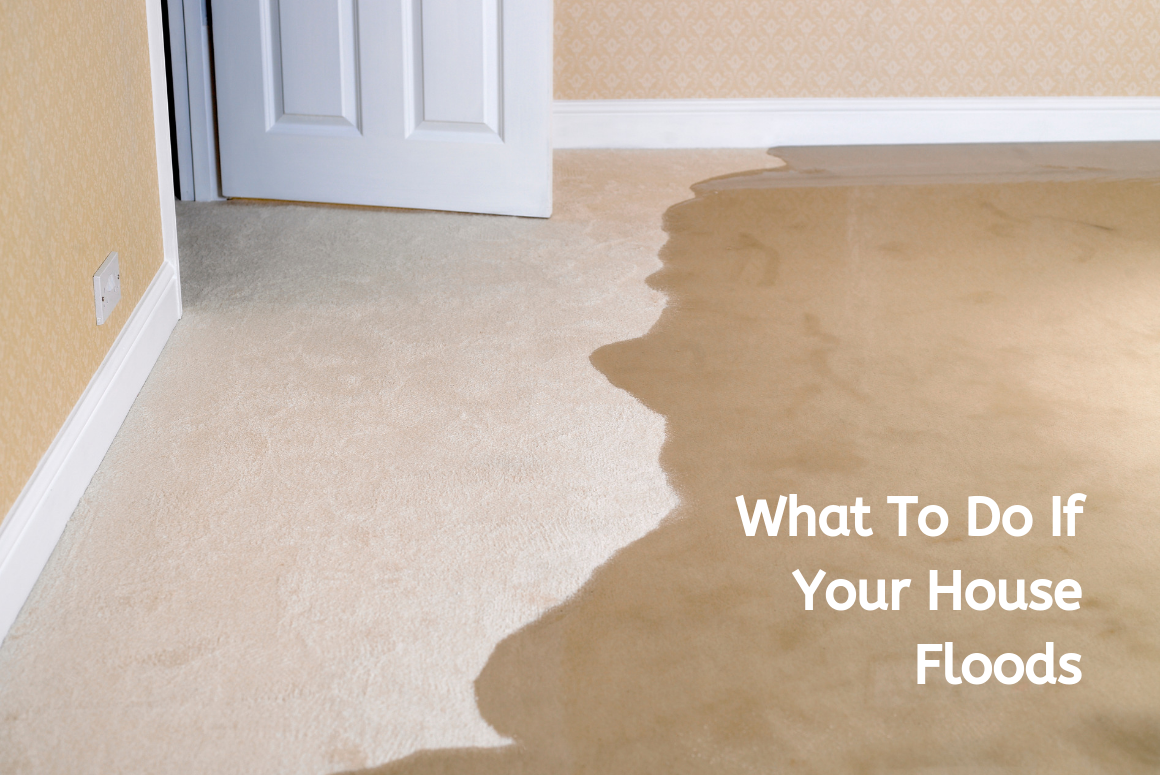You get home from work or picking the kids up from school and as you step through the front door, your foot lands squarely in the center of a good-sized puddle right in the center of your doorway. However, it’s more than just a puddle….upon further inspection, there’s water from the front door to the kitchen and in every room in between. This is one of many scenarios that your family could experience, so we’ve put together what to do if your house floods.
Make Sure You Have Insurance
You’ll want to do this before you experience a flood of any kind so that you can ensure you aren’t out of pocket for any repairs or replacement items you may need following a flood. Most insurance policies don’t include flood insurance for severe weather or water entering a home from outside. For burst pipes inside the home (and in some cases outside pipes), you’re usually covered by standard insurance policies. Either way, take the time to check what’s included in your policy and add anything extra to make sure you’re fully covered. There’s nothing worse than experiencing a burst pipe or unexpected flooding from a severe storm and finding out that you don’t have coverage.
Stop The Water Source
Whether a pipe has burst or there’s rainwater coming into your house, the most important thing to do to stop the situation from getting worse is to prevent more coming inside. If a pipe has burst, turn off the water supply to your house until you can get a handle on things; if the flooding is caused by a natural disaster, try to clear any drains outside your house that might be preventing water from being carried away from your house, or contact your city services to request that they open and/or clear storm drains to help move water away faster.
Make Sure It’s Safe
Water is extremely destructive as it weakens structures and foundations if it’s been around for a while. Depending on where the water has entered your house, you should check that it’s safe for you to be in the house. For example, if a pipe has burst in the upstairs laundry room and you’ve got water by your front door, there may be damage to top-level floors/the ceiling above you. Look for buckled walls or floors, and even bubbles in paint or wallpaper, as well as warped or cracked foundations as a way to tell if there is structural damage and don’t enter if you feel something may collapse on or around you.
Call Your Insurance Company
Now is not the time to call to get insurance but the time to call to make a claim on your home. The sooner you call, the quicker the process gets started to restore your home and the items within it. Don’t start doing anything yourself either – wait for an adjuster to arrive and determine what is covered, and the next steps from there. Your insurance company should provide you with a copy of the report, but it’s also a good idea to document things for yourself and keep lines of communication open throughout the process.
Take Lots Of Pictures
This follows the documentation process mentioned in the previous step but it’s also important to do this before any renovations or repairs take place. You will want clear documentation of the damage caused by the flooding, whether you take pictures, video, or both. And don’t stop there either – continue to take pictures throughout the cleanup process and into any repairs or renovations done. Pictures are a great way to have a clear comparison of before, during, and after, and make it easier for any insurance claim paperwork you might have to complete.
Protect Your Health
Even if you’re not taking part in the renovations, water can bring health issues with it. Household chemicals or sewage are the worst contaminants in water, and the after-effects of standing water can be rot and mould that are serious health hazards too. If you have to enter your house to clear standing water or help with restoration, wear the proper gear – waterproof boots and rubber gloves are key. Throw out any food that may have come into contact with floodwater, and never drink it (the same goes for pets)!
Protect Your Home From Future Flooding
Water damage is destructive and expensive and can have long-term consequences to your health and the value of your property. Whether you’ve experienced a flood in your home or not, take precautions to protect your home before it happens:
- Invest in environmental monitoring in your home – pipe freeze and leak detectors fall into this category – so you can catch a leak before it gets worse.
- Keep gutters and downspouts free of debris like leaves, twigs, and moss, and add leaf guards to prevent build-up.
- Make sure water moves away from your house by angling soil away from your home’s foundation and toward the yard.
- Keep an eye on your foundation – fill in any cracks you see forming in your basement or foundation levels and keep an eye on trees that are close to the property to ensure that their roots don’t cause structural issues either.
- Put valuable items and documents, and your emergency supplies, in waterproof containers, and store them off the ground as well.
Terms and Conditions
All content provided on this blog is for informational purposes only. The owner of this blog makes no representations as to the accuracy or completeness of any information on this site or found by following any link on this site. The owner will not be liable for any errors or omissions in this information nor for the availability of this information. The owner will not be liable for any losses, injuries, or damages from the display or use of this information. This policy is subject to change at any time.

